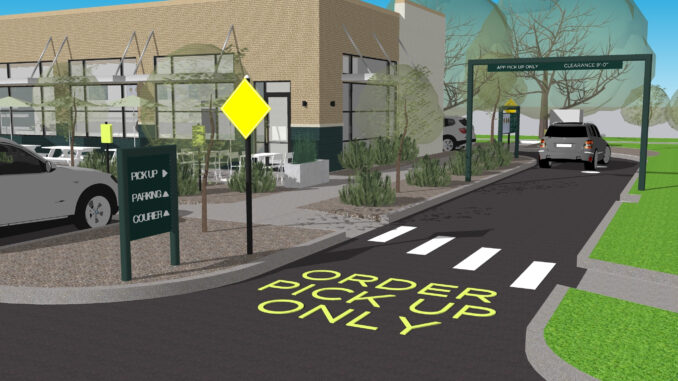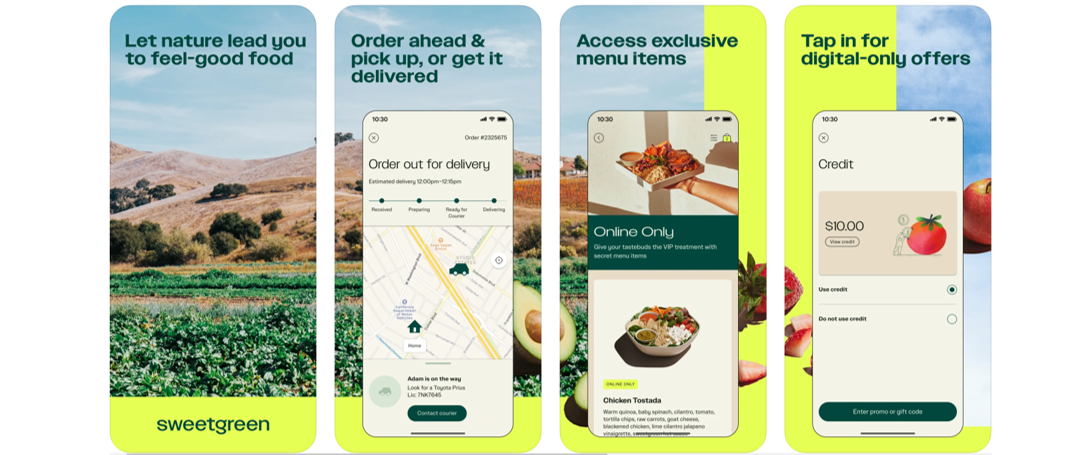
By Paulina Hubli, Restaurant Technology News - 5.13.2022
Sweetgreen has been on an technology innovation tear this past year as it looks to rapidly grow both its physical and digital presence. In its May earnings conference call, Jonathan Neman, the company’s Co-Founder and CEO shared its vision for digital transformation and technology-enabled business improvement.
According to the California-based “plant-forward, seasonal, and earth-friendly” fast casual restaurant chain, which was founded in 2007 and today boasts more than 150 locations, total digital sales represented 66% of the company’s Q1 total revenue, with approximately two-thirds of those sales coming via our own digital channels. It’s no wonder, then that the company is investing heavily on enhancing its digital experience with a “focus on digital relationships,” allowing the company to add new customer channels, drive frequency and additional restaurant volumes.

In August, Sweetgreen announced plans to open its first pickup kitchen in the Mount Vernon area of Washington, D.C. exclusively servicing digital orders placed ahead via the company’s app, website or third-party platforms.
“While still offering an outdoor patio for dining, this location will have a smaller square footage than our typical store due to no frontline ordering or inside dining room,” said Neman. “With two-thirds of our sales already coming from digital channels, we have the unique opportunity to use this format to create hyper convenience for our digital pickup and delivery customers.”

Additionally, within the next year, sweetgreen plans to open its first restaurant feature in its so-called sweetlane, an order-ahead, drive-through pickup lane in Schaumburg, Illinois. To utilize the sweetlane, customers will place orders in advance exclusively through the company’s digital channels.
“We are always innovating to provide more convenience for our customers, which is why we’re excited about our first sweetlane concept in Schaumburg,” said sweetgreen Co-founder and Chief Concept Officer, Nicolas Jammet. “Digital customers are our most habitual users and we believe this new format will provide us with more options to connect people to real food.”
“As we continue our suburban and residential expansion, we believe sweetlanes will unlock additional convenience with less friction for a diverse group of sweetgreen customers,” said Neman. “Both of these new formats highlights how we can expand our digital platform to reflect our commitment to a convenient multichannel approach that meets our customers wherever they are.”

“Investing in our digital experience with the focus on own digital relationships continues to be a key pillar for us,” said Neman. “Our native delivery channel was our fastest growing channel in the quarter, outpacing third-party marketplace growth. Ordering delivery via our app is the best way to have sweetgreen delivered. It provides a superior ordering experience, a broader menu and better value.”
Last August, sweetgreen announced plans to acquire Spyce, a Boston-based restaurant chain powered in large part by automation technology. Launched in 2018 and revamped with new technology two years later, Spyce employes automated cooking system, a dynamic, customizable menu and in-house delivery. The food robots prepare more than 50 recipes, including both both salads and warm bowl food.
The terms of the deal were not disclosed, although some industry observers surmised that Spyce’s valuation ran between $50 to $100 million, based on its last funding round. Sweetgreen has not yet announced if or when it will introduce Spyce’s technology into its own restaurants, although speculation is high that the proprietary robotics will eventually find their way into sweetgreen’s kitchens.
“Spyce and sweetgreen have a shared purpose,” said Neman. “We built sweetgreen to connect more people to real food and create healthy fast food at scale for the next generation, and Spyce has built state-of-the-art technology that perfectly aligns with that vision. By joining forces with their best-in-class team, we will be able to elevate our team member experience, provide a more consistent customer experience and bring real food to more communities.”

